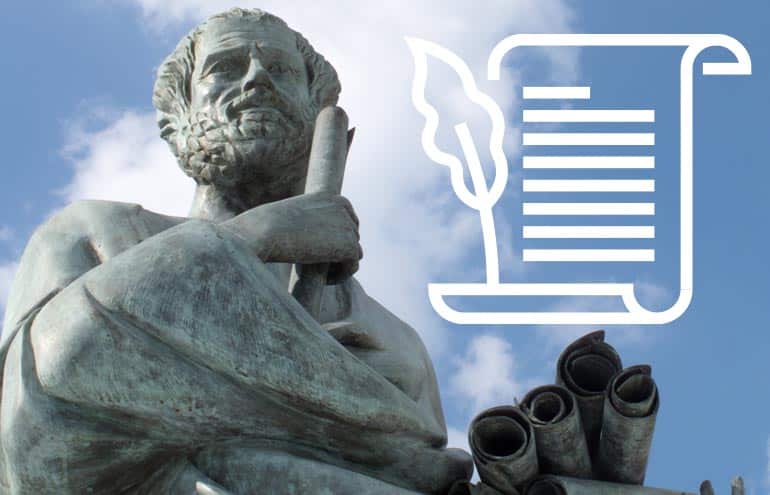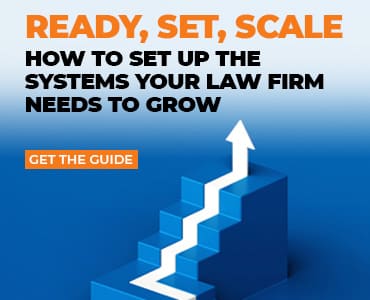Here’s how to use Aristotle’s rhetorical appeals — ethos, pathos and logos — to be truly persuasive in your writing.

In my work as a marketing consultant for law firms, few questions are posed more frequently than this: How can we write more persuasive, effective content for our website?
This is an age-old question in legal marketing, and the answer is even older. Persuasive writing follows a path laid thousands of years ago by Aristotle, the original master of persuasion.
Aristotle’s insight, which has as much relevance today as it did for the ancient Greeks, was that content that connects is structured according to the rhetorical appeals of ethos, pathos and logos.
Ethos
Ethos relates to one’s credibility and expertise. To persuade through content, it’s important to establish that you’re credible. Ethos builds trust by demonstrating one’s integrity and competency.
Why it’s important. Today, consumers of legal services — from individuals to large corporate entities — are online, in control, with access to more information than ever. They’re not accepting claims at face value or blindly heeding someone else’s referral. They’re searching, reading and validating, in the process of attempting to identify a particular type of expertise to help solve the particular problem they’re facing.
They’re not buying hyperbolic and unsubstantiated claims and, as a result, not buying from those who make them. They’re merely one click away from a better solution.
Putting ethos into action. When writing a bio, blog post or practice area description, replace bald assertions about your expertise and credibility (“trustworthy,” “skilled,” “experienced”) and instead provide examples that allow your readers to draw these conclusions about you on their own. Testimonials, case studies and other objective examples of prior experience help accomplish that objective.
According to a study conducted by Nielsen, 92% of consumers are more likely to trust nonpaid recommendations than any other form of marketing and advertising. Just as in the courtroom, for every claim you make in your content, back it up with some persuasive evidence (preferably testimony from others who know, like and trust you).
The jury (your reader) is watching closely.
Pathos
Pathos involves making an emotional connection through your content. Can you express empathy and tell stories that resonate? Does your content make it clear that you understand your audience’s challenges and know what it’s like to walk in their shoes?
Why it’s important. We all like to believe that we make decisions based solely on logic, but the truth is — when it comes to buying laundry detergent or legal services — our decision-making is heavily, and perhaps primarily, influenced by emotion.
Douglas Van Praet, author of “Unconscious Branding: How Neuroscience Can Empower (and Inspire) Marketing,” explained the importance of emotion in marketing as follows:
“The most startling truth is we don’t even think our way to logical solutions. We feel our way to reason. Emotions are the substrate, the base layer of neural circuitry underpinning even rational deliberation. Emotions don’t hinder decisions. They constitute the foundation on which they’re made!”
You can’t just appeal to logic in your content. You need to make an emotional connection with your prospects. Business development doesn’t happen all at once. It’s often a long, incremental process. By making an emotional connection, you can draw a prospect into your ecosystem and keep them there. When the time is right, when their need is acute, you’ll be in a position to transform the relationship from that of writer-reader to attorney-client.
Putting pathos into action. Clients want to hire lawyers who understand them. They’re not buying legal services. They’re trying to buy a positive outcome. They’re not looking for a “super” lawyer. They want a super result. They’re not impressed by jargon and complexity. They’re seeking clarity.
For thousands of years, storytelling has been the best way to communicate a message that stands out and leaves a lasting, emotional impact. There’s a story that matters to every client. It’s what attracts or repels them from your content and, by extension, you.
But here’s the thing: The story that’s important has nothing to do with yourself. It’s the client’s own story that matters most.
Clients are attracted to stories that demonstrate you understand what it’s like to walk in their shoes. What pain are they experiencing? What opportunities seem out of grasp? Speak their language. Demonstrate empathy. Tell a better story that makes your clients feel understood and validated, so they trust you to solve their problems.
As Stephen Covey explains in a discussion about pathos in his classic book, “The 7 Habits of Highly Effective People,” “Seek first to understand, then to be understood.” If your readers like what they see and your content evokes an emotional response, they’ll be more likely to want to continue the conversation.
Logos
For most lawyers, logos (which means “word” in Greek) is in their comfort zone, as it relates to an appeal to logic. Logos means presenting arguments, data, statistics and other types of reasoning to make your case to prospects.
Why it’s important. Even if prospects grow to know, like and trust you through your content, they’ll hesitate to engage further unless your left-brained, rational arguments persuade them you are better equipped to serve them than the multitude of available alternatives.
As a content creator, and as a lawyer, your job is to find evidence to support your claims. Evidence that is testimonial in nature appeals to your audience on the basis of ethos. When you present facts, data and statistics, you appeal to your audience with logic or logos.
Putting logos into action. Can you quantify the value you deliver for clients? Have you secured multimillion-dollar judgments for clients? Have you successfully defended significant lawsuits? Can you move clients through a Chapter 11 bankruptcy restructuring faster than others, saving clients considerable professional fees and administrative costs? Have you developed a unique project management process or value-based billing system that benefits clients? Do you have statistics, data and research that support these claims?
Ethos, Pathos and Logos: Use All the Tools at Your Disposal
Writing content for legal marketing requires balancing and integrating all three rhetorical appeals: ethos, pathos and logos.
The objective of a lawyer bio, blog post, or firm practice area description is to establish the authority and credibility of the service provider, make an emotional connection with the reader, and present a convincing argument that the lawyer or firm is the undeniable best option for the job. To accomplish this — to be truly persuasive — the writer must use all tools at their disposal to influence the prospect.
Too much legal marketing content is rooted in ethos — attorney- or firm-centric in nature — and fails to take into account what really matters to the reader. The solution to this problem is rooted in the past. As the old saying goes, “Everything old is new again.” When it comes to legal marketing content, at least it should be.
Illustration ©iStockPhoto.com
















